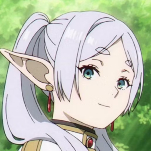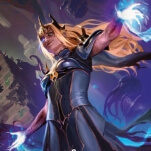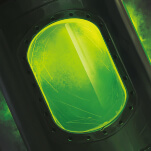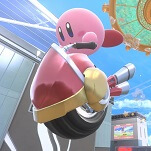Every run of Steven Universe Beach City episodes gets followed by some climactic events tearing open part of our understanding of the broader Steven Universe mythos. Is this what you were expecting? Both of today’s episodes move inexorably, slowly, toward decisive conclusions that set up major pieces of the season’s endgame—and it’s all put into motion by Ronaldo, who comes to get Steven in the middle of the night when he discovers the silent barn plopped down on the moon.
In “Can’t Go Back,” Steven discovers that Lapis has been hiding near the base, using an observation tool to watch the Gems as they practice fighting in preparation for the probable Diamond assault on the planet. He tries to convince her to come back to Earth and take a stand with the other Gems, and to accept the fundamental constant of change in her life—a similar emotional journey to the ones taken by the other main characters on this show—only for Lapis’ literal fight-or-flight instinct to win out.
Most of “Can’t Go Back” is lovely and understated, particularly the visual style of Steven and Lapis’ confrontation inside the observation field, which allows storyboard artists and writers Miki Brewster and Jeff Liu to render Lapis as a silhouette moving through scenes of the ordinary in Beach City. It’s an effective, punchy way of showing Lapis drifting through a simulacrum of the life she won’t permit herself to have. I will say, though, that her shadowy presence accidentally highlights my major issue with the episode—I wish we’d gotten a little more out of Steven’s interactions with Lapis, who I’ve always liked as a character, but who occasionally feels a shade less complex than the rest of the Gems. I get that Lapis’ entire character is based on her being withholding and unwilling to open up to anyone who isn’t Steven (or, in some cases, Peridot), but we knew she was afraid of the Diamonds, and we knew she was willing to, against her own emotional interests, sacrifice her relationships with the other Gems in an effort to avoid being trapped again.
Most of “Can’t Go Back” plays out as a minor tragedy in which Lapis briefly warms to the idea of coming back to Earth as expressed in her first-ever song: “That Distant Shore,” with lyrics by Jeff Liu and music by Aivi, Surasshu, and longtime Steven Universe musician Stemage. It’s a sweet song that finds Lapis longing to be something other than what she is, using the observation orb to imagine herself as a bold, confident person who can put herself out there emotionally and prioritize her friendships over her own immediate safety. (Basically, “That Distant Shore” is “FOMO: The Song.”) Lapis uses her song (and Jennifer Paz’s singing, which I’m disappointed we haven’t gotten on the show until now) to create a vision that’s a little different from the emotional situations Steven Universe characters usually find themselves in, and a fitting one for a character who still hasn’t managed to get past or find a way to cope with old trauma—or, as Lapis puts it, “I can’t just let go of what happened to me.”
It feels inevitable that Lapis will show up during a climactic moment of confrontation toward the end of the season, so her abandonment of Steven still feels like an inevitable step on a path toward the more-stable conclusion of her longer arc—think Peridot stealing the Diamond communication device from the moon base, but a little less funny and slightly less compelling. (Than again, I’m a longtime Peridot fan.) Still, that inevitability helps sell some of the lighter moments of the episode as easier to take, like Steven promising Lapis, “I sleep with a teddy bear. No judgments,” or his quieter, reflective attempt at imagining Lapis dropping the barn on the beach so Steven could go over to borrow sugar. (Even though Lapis doesn’t know what sugar is.) As often happens on this show, though, the relative levity goes out the window as soon as Steven has a vision of the Diamonds.
And it doesn’t help Lapis that the contents of Steven’s vision—Yellow and Blue informing Pink Diamond that her presence is the only thing needed to keep the Earth colony on track, followed by the strong suggestion that Pearl was apparently the one who really shattered Pink Diamond—feels a lot more immediate than Lapis’ anxiety. The biggest emotional stake for Lapis now (or at least my biggest emotional stake in Lapis) is her relationship with Peridot, who is still kind of sad and living in the bathroom—and without a confrontation between the two characters, it’s harder for me to remain invested in what’s going on with Lapis. I’m sure we’ll get that moment eventually, but until then, I’m more excited by Steven setting up the next episode by firmly, decisively telling Lion: “I need you to take me to Pearl.”
“I can’t exactly shatter myself.”
With those five words, Steven Universe confirms a long-standing fan theory—that Rose Quartz was, in fact, Pink Diamond—and opened the door to a whole bunch of new questions. Was there ever a real Rose Quartz, or did Pink Diamond start the rebellion herself in disguise? Does this mean Steven has standing as a member of the Diamond Authority? How did Rose hide her true identity from Garnet’s future vision? I’ve never been the biggest theorist when it comes to the show’s bigger picture—generally speaking, I prefer to experience the show at the admittedly infrequent episodic rate—but this is definitely the most excited I’ve been about those questions in a while.
Befitting this kind of fundamental shift in the way we think about the show, “A Single Pale Rose” forces Steven to go on a wild, literally internal journey through Pearl’s Gem before we can confirm what actually happened all those years ago. After returning from the moon, Steven is on edge around Pearl, eventually confronting her head-on about who actually shattered Pink Diamond. Pearl clams up, as she usually does when faced with these kinds of questions, and sends Steven inside her Gem to look for her cellphone, which she implies will contain the answers he’s looking for. Pearl’s mind is apparently made of several smaller, semi-psychological Pearls, representing different aspects of her psyche, and Steven has to interact with quite a few of them to get where he’s going.
Putting aside questions like, “Is this what all Gems look like on the inside?” writers and storyboard artists Amber Cragg and Hilary Florido do an excellent job depicting the bizarre interior of Pearl’s mind—particularly in Steven’s interaction with the surface Pearl, who is in charge of keeping items cataloged and alphabetized so that Pearl can retrieve them at will. Beyond this, Pearl’s excitement over organization—communicated in a perfect DeeDee Magno Hall line reading that contains both enthusiasm and the obvious papering over of bigger emotional problems that characterize the Pearl we’ve come to know and love—she also gives us a glimpse of quite a few phone numbers stored inside Pearl’s Gem, including ones sealed with lipstick or dotted with little hearts. Has Pearl secretly been exploring her sexuality with humans this whole time? Give me that episode! I suppose it’s possible we wouldn’t see those interactions from Steven’s point-of-view. After all, as this Pearl puts it, “I’m very good at compartmentalizing everything.”
While the big revelation from the end of this episode is the thing I’m sure people will be taking away from “A Single Pale Rose,” I do want to highlight some more of those smaller touches. For example: The way Pearl uses her phone, which is hilarious. Not only does she have a literal briefcase instead of a smaller, more usable phone case, her primary use of the phone is to send Steven a text that reads, “Dear Steven, Hello. Love, Pearl.” And when one of the inner Pearls uses the phone to text Steven “I want to tell you but I can’t,” Cragg and Florido manage to inject a shockingly effective use of the speak-no-evil monkey emoji to suggest that Pearl literally can’t talk about what happened.
As it turns out, once Steven progresses through the many internal Pearl Gems—past Pearl’s past anxiety over losing Rose, past the war with Home World, past even the surface explanation for what happened to Pink Diamond—he discovers the truth. Pearl, who I think we can safely say was created to serve Pink Diamond, shape-shifts into Rose while Rose returns to her original form as Pink Diamond, swallowing a fake collection of Gem shards so that she would appear to have been shattered after being struck with the sword. (Which, as we might recall, was designed to only poof Gems, briefly destroying their physical form but never the Gem.) This might also be an explanation for why Pearl doesn’t shape-shift, something she claimed she could do very early in the series but rarely, if ever, displays.
So there was no murder after all. Pink Diamond—Rose—had to create the illusion that she’d been shattered, in order to allow the rebellion to come to fruition free the Earth of Diamond rule forever. (Except that, of course, it doesn’t seem like Rose or Pearl anticipated the devastating attack that wiped out most of the Crystal Gems.) At the moment, it seems like Steven Universe is more interested in interrogating how everyone will respond to this information rather than diving deeper into questions of how the Diamond Authority works and what actually happened to Pink. After all, based on her reaction at the very end of the episode, it seems like not even Garnet knew the truth. And like Garnet back in “Pool Hopping,” I’m pleased to say that I really have no clue what’s going to happen next.








































